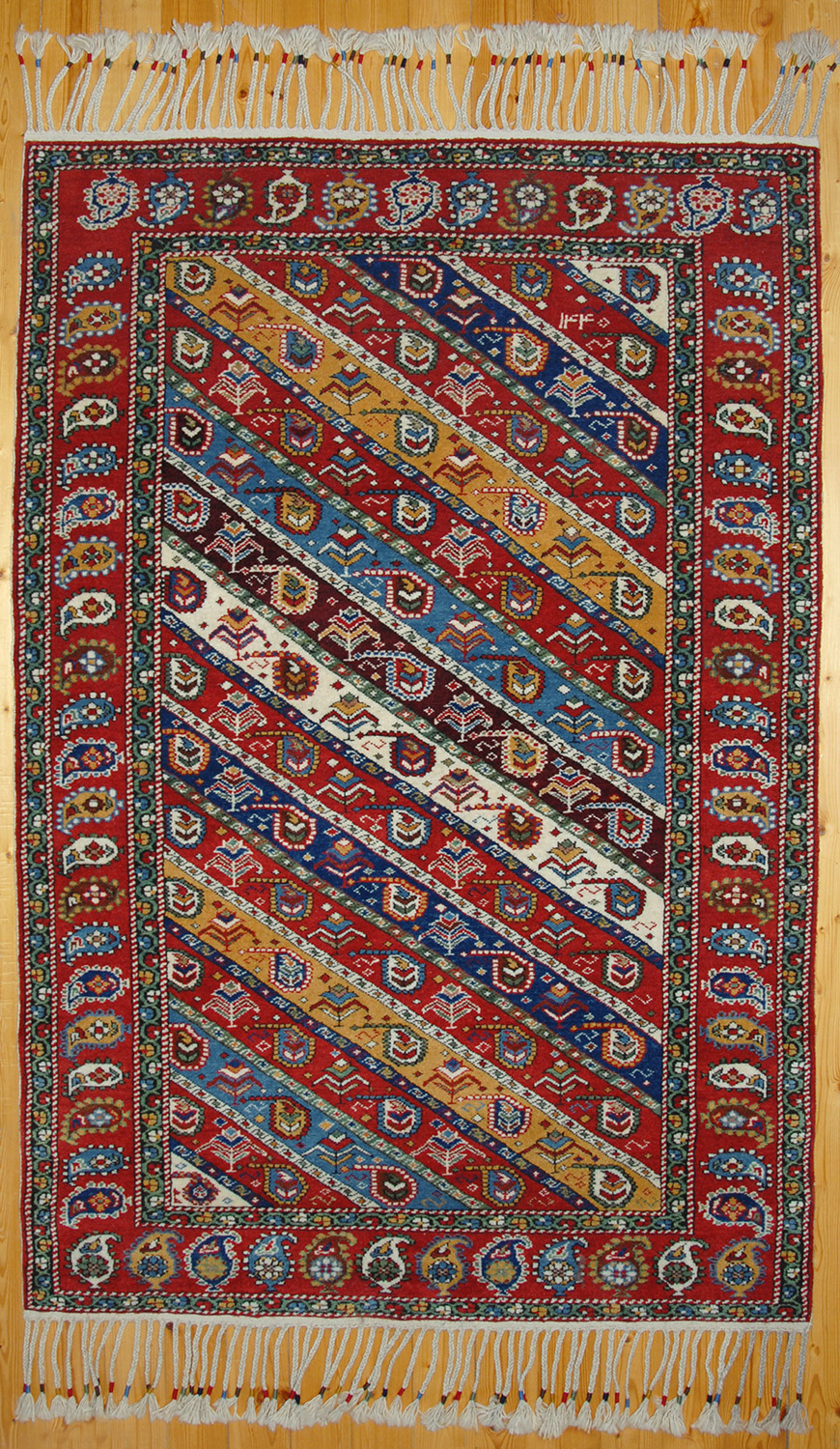
|
"Ancient Genje" rug Code: GJAG08B Size: 113x169cm Size (ft): 3'8"x5'6" Area: 1.9 m2 Density: 170 000 knots per square meter, totally ~320 000 knots Colors: red, ivory, medium blue, navy blue, yellow, gold yellow, green, olive green, medium brown, light brown, dark brown, aubergine. Dyes: madder, weld (Reseda Luteola), onion skins, indigo, pomegranate skins, walnut husks, natural dark brown sheep wool, natural ivory sheep wool. Materials: Handcarded and handspun wool for pile, ivory wool warps and ivory wool wefts (two shots). 1cm of flatwoven kilim ends at both sides. - wool on wool Knots: Gördes (Turkish, symmetrical) Pile height: 0.4cm Ends: thin plaited fringes tied with colorful yarns Inscriptions: 1440 (weaving date) Weaver: Nazila Weaving Period: Two months Handwoven in Azerbaijan Design: This joyfully spirited art rug is a striking example with a vivid palette of deeply saturated natural dyes and its dynamic adaptation of the classic Gendje diagonal stripe composition. The field with multicoloured diagonal stripes, containing angular floral sprays and boteh motifs, in broad madder red main border of polychrome botehs between small flower head stripes, outer dotted and barber-pole stripes.
|
|
Contact us for more information about this rug

.jpg)
.jpg)
.jpg)
.jpg)
.jpg)
.jpg)
.jpg)
.jpg)
.jpg)
Contact us for more information about this rug

|
For more information about the above rug or to place an order please email
vd@azerbaijanrugs.com |